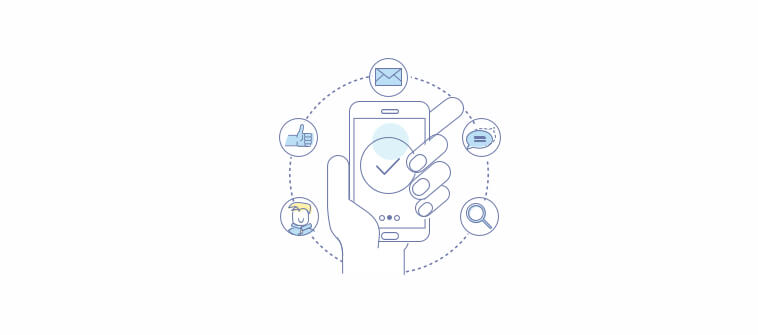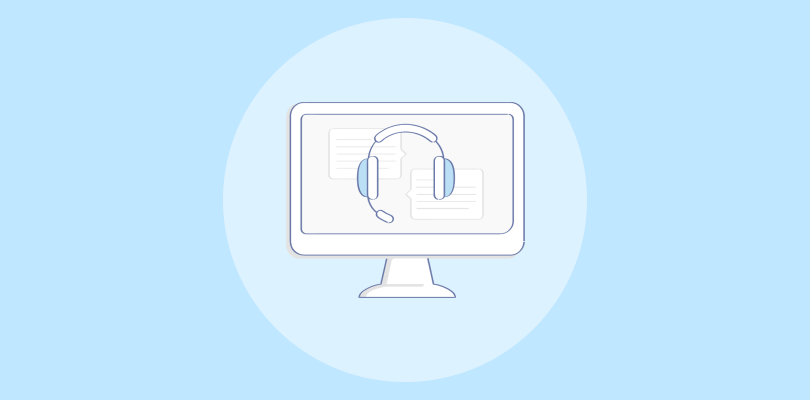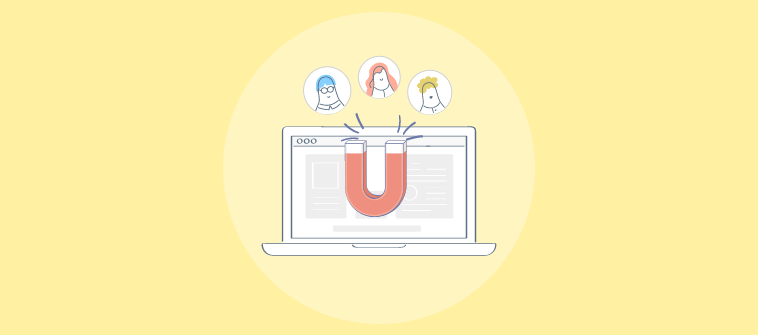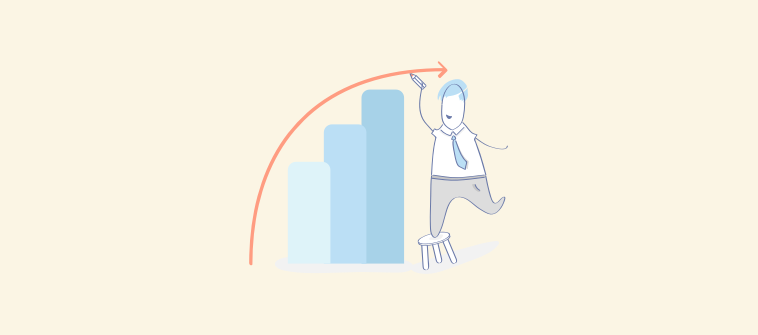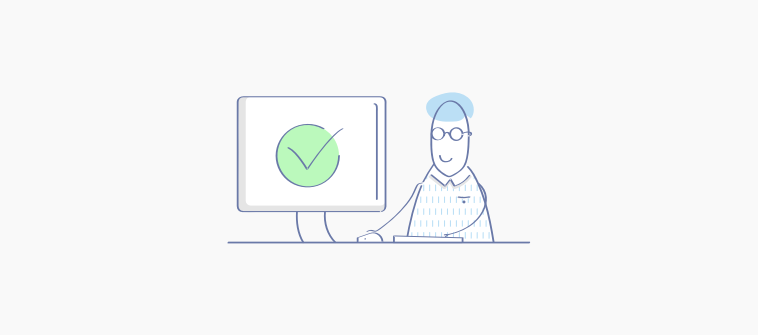Do you just assume you already know who your customers are and what they want? Do you have any strategies in place to target different customers differently?
Whether you are a marketer looking to target your niche audience or a product designer striving to create eye-catching products, understanding your customer base is the first step in the right direction.
Different customers have different tastes. You need to drop the ‘one-size-fits-all’ approach and segment customers into groups to improve the customer journey.
With customer segmentation, you can break down your customers into smaller, more detailed groups (based on age, gender, interests, location, values, etc.) and target them even more specifically.
In this blog, we will shed light on the importance of customer segmentation, understand the different segmentation models, and see how you can prepare a robust customer segmentation strategy with the help of data analytics and customer support tools.
What Is Customer Segmentation?
Customer segmentation refers to the process adopted by most businesses to divide customers into groups based on common traits or characteristics so that companies can give relevant attention to each group and target them separately.
While exploring the customer segmentation definition, we realize that all your customers have one thing in common- they all show interest in your products or services. However, when you look beyond that, there are personality traits or demographic differences that a business should be aware of to improve the customer experience.
Why Is Customer Segmentation Important?
Customer segmentation allows marketers, product designers, customer service professionals, and sales reps to better tailor their efforts and customer experience strategy to meet the expectations of different audience subsets. Segmentation has proved to be immensely beneficial for businesses in more ways than one.
For example, when we talk about email campaigns, carefully targeted or personalized emails have better open and click-through rates compared to non-targeted emails.
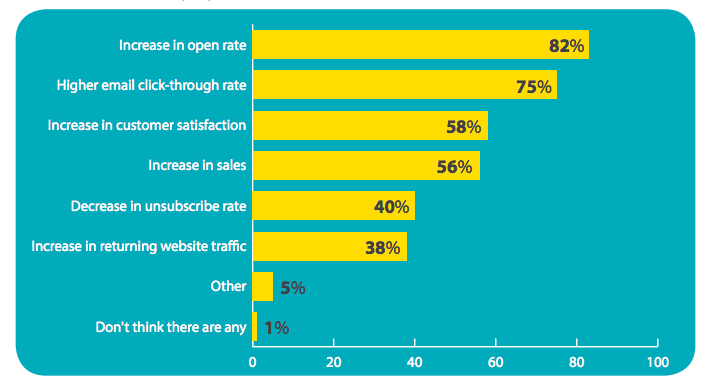
Now, if we think the benefits of customer segmentation are only limited to emails, then we might be just scratching the surface. Let’s explore some more benefits and see the bigger picture.
- Fine-Tune Your Marketing Campaigns
In order to effectively market your products or services to your customers, it’s important to understand who they are and categorize them into different groups.
For example, you can launch effective social media campaigns to reach your target audience that is active on the leading social media platforms such as Facebook, Instagram, or Twitter. This will help you get their attention and drive more sales.
With the help of customer segmentation, businesses can fine-tune their marketing message to align with exactly what the customers or prospects are looking for, thereby increasing their chances of conversion. Marketers can even figure out the preferred communication channels of different segments for improved targeting.
- Discover the Needs & Pain Points of Different Segments
When you decide to put your customers into different groups, you can gain a more holistic view of their needs as well as challenges.
For instance, when you segment your customers as online vs offline shoppers, you can easily realize their top challenges. In the case of online shoppers, it can be anything from the lack of online payment options to a slow checkout process that is stopping customers to buy from you.
Similarly, offline shoppers might express different needs- they might want your store to remain open 24×7 or might ask for additional billing counters for a hassle-free shopping experience. Discovering such needs and problems first hand and addressing them can help your business cater to a larger audience.
- Improve Your Customer Service
Customer-based segmentation is not only pivotal in acquiring new customers but is equally important in supporting your existing customers.
59% of customers say that personalized customer service based on past interactions is very important to winning their business.
Customer segmentation allows you to assist different customer groups based on their unique needs. For instance, we all know that baby boomers (people born between 1946 to 1964) are not the most tech-savvy. So, for your customers aged more than 50 years, you might want to offer them support on channels such as phone or on-site that they are familiar with instead of modern channels such as live chat. Customer service scripts can help your agents steer customer communication management in the right direction.
To further enhance your customer service management efforts, you can use a tool such as ProProfs Help Desk. Agents can easily view past customer interactions at a glance and offer personalized service at scale.
- Retain Your Customers & Increase Revenue
By fine-tuning your marketing messages and SaaS customer support efforts, you’ll witness an increase in customer retention because users will be more likely to purchase from your again when they’re delivered exactly what they need.
According to a research by Epsilon, 80% of consumers are more likely to make a purchase from a brand that provides personalized experiences.
With the help of effective segmentation, you can ensure that the messages you are sharing via email, on-site, digital ads, or other mediums are targeted and relevant to the individual seeing it. In short, targeted marketing leads to more sales, happier customers, and helps you increase your business revenue.
- Unearth New Opportunities
With customer segmentation, it is easier to stay updated on what’s trending. You can monitor the changing preferences of your customers and come up with new products or services to stay relevant and profitable.
As a business, when you better understand who your existing customers are, you can figure out ways to target new segments and markets. Let’s explore a customer segmentation example to understand this better.
Canon, the famous camera company, focussed solely on photography equipment for professional use until they realized there was a huge opportunity to grow in the low-end digital camera market. While grown-ups can use their smartphone cameras to capture attractive images, kids don’t have that option as many parents are hesitant to buy their kids smartphones. Canon realized this opportunity and offered a safer alternative in the form of low-end digital cameras for children.
What Type of Information Is Needed for Customer Segmentation?
When it comes to capturing vital information for segmenting your customers, the options are endless. Right from basic information such as the age or gender of your customers to highly specific information such as their opinions or values, you can create interesting customer segments.
You can collect information on:
- Number of purchases in a month
- How customers find your business (newspaper ads, social media, referrals, etc.)
- What channels they prefer (chat, phone, email, text message, etc.)
- What payment methods they use (Credit cards, digital wallets, etc.)
- Devices used for shopping (Smartphone, laptop, tablet, etc.)
To make data collection a smooth and structured process, you can leverage customer segmentation models that have been discussed below.
Types of Customer Segmentation Models
If you are new to customer segmentation, here is some good news: there are chances your business is already tracking some relevant data.
Basic insights on your customers might be present in your CRM tool or on survey forms that you had shared with your customers. Let’s take a look at some popular customer segmentation models:
| Customer Segmentation Model | Variables |
|---|---|
| Demographic Segmentation | Age Gender Education Occupation Income Marital Status Religion |
| Geographic Segmentation | City State Country Coastal Area Hilly Area |
| Behavioral Segmentation | Tendencies Product Use Frequency of Purchases Habits |
| Psychographic Segmentation | Personality Values Interests Lifestyle |
| Technographic Segmentation | Mobile-use Desktop-use Software Adoption Apps |
| Value-Based Segmentation | High-Value Customer Low-Value Customer |
1. Demographic Segmentation
In the business sense, demographic data refers to the socio-economic information collected about your customers. It involves data around general characteristics such as their age, gender, income, place of residence, etc. Demographic groups can be easily determined and commonly form the basis for more advanced segmentation models. Demographic data falls into categories such as:
- Age
- Gender
- Education
- Occupation
- Income
- Marital Status
- Religion
- Nationality
Businesses can either directly collect such information from customers or approach third-party data collection companies. By understanding the demographic attributes of your audience, you can determine how likely a certain group is to buy your products or services. For instance, if you sell alcoholic beverages, you can easily target those who are of legal age.
2. Geographic Segmentation
As the name suggests, geographic segmentation is used to divide customers based on where they live, the makeup of their local area, or the climate. Geographic segmentation is popular among businesses that have physical stores or offices.
For example, if you own a local restaurant, it will only make sense to share discount coupons with those who live within the vicinity of your restaurant. Similarly, if you sell mountaineering equipment, a majority of your customers will be the ones staying around hilly areas.
If you own an online business, geographical segmentation is equally important to you. For example, during the COVID-19 pandemic, a lot of areas were under complete lockdown. If you have your customers’ geographical data, you can easily target those who live in areas where the lockdown has been lifted.
3. Behavioral Segmentation
Human behavior is one of those complicated things that has always puzzled even the best of marketers. However, with the right data sets at hand, you can look to solve this puzzle piece by piece. To collect relevant behavioral data, you can ask questions such as:
- Whether a customer has previously bought your product?
- What communication channels do they prefer?
- How regularly do they buy from us?.
- Do they prefer online or offline shopping?
- Are customers referring us to their friends or family members?
With the help of this customer segmentation approach, you can target customers by analyzing their habits and interaction behavior. For instance, if a majority of your customers prefer live chat to seek assistance, hiring more chat support professionals to keep up with the demand will only make sense.
4. Psychographic Segmentation
Psychographic segmentation takes you closer to your customers’ personalities, attitudes, values, and interests. Such data can be easily collected through surveys, however, interpretation can get quite challenging as a customer’s interests and values keep changing with time. Psychographic information can cover areas such as:
- Personality (Expressive, amiable, analytical, etc.)
- Values (community pride, desire to save the environment, etc.)
- Interests (Trekking, gaming, playing an instrument, etc.)
Psychographic segmentation can help you narrow down your target market and personalize your product or service offerings. For example, if a majority of your customers share the value of saving the environment and the planet, you can launch a line of sustainable products or opt for eco-friendly packaging.
5. Technographic Segmentation
Technographic segmentation refers to the process of dividing your customers or business clients based on the technology they use or their technology stack.
If you know which devices are used by your customers to shop from your e-commerce store, you can create a seamless online shopping experience for them. For example, by optimizing your website for devices such as smartphones and tablets, you can significantly improve the customer experience.
If you are a B2B software company, technographic data will help you identify the current software and hardware used by your clients and customize your software accordingly.
6. Customer Value-Based Segmentation
Businesses determine customer value by the cumulative amount they spend to buy your products or services. The popular metric is CLTV (Customer Lifetime Value) which tells companies how much revenue they can expect a customer to generate over the course of the business relationship.
Therefore, by segmenting your customers based on the value they bring to your business, you can determine their eligibility for offers, loyalty rewards, and other promotions. For example, you can direct your loyalty programs towards your high-value customers as retaining them will mean higher profits for your business.
Similarly, you can direct your upselling and cross-selling strategies to low-value customers to encourage them to purchase more from your brand.
FREE. All Features. FOREVER!
Try our Forever FREE account with all premium features!
Customer Segmentation Strategy: How to Segment Customers in 5 Easy Steps
Actionable customer segmentation begins with a goal in mind and ends when your business is able to share personalized experiences with different customer groups. In this section, we will guide you on how to segment customers in easy steps.
1. Gain Clarity on Your Customer Segmentation Goals
The first step to creating a robust customer segmentation strategy is to have clear goals and objectives. You need to ask yourself important questions before you put in the real work:
- Why are we spending time on customer segmentation?
- Will our customers benefit from segmentation?
- How much time can we devote to segmentation?
- How can it help us become a more customer-focused brand?
The broader goal of customer segmentation is to better understand the needs of different customer groups and improve their customer journey. However, your business can always set specific goals based on your unique needs. For instance, you might want to only target your customers aged between 20-30 years to sell them a unique product meant for them.
2. Identify Customer Commonalities
The idea of consumer segmentation revolves around finding common characteristics among different customer groups. You need to adopt a bird’s-eye-view of your customers and see what common aspects connect them.
For example, you might find out that a lot of customers share a similar value of making the world a better place for all animals. Or, you might figure out that a majority of your women customers prefer online shopping compared to men who wish to purchase products from brick and mortar stores.
In short, there are plenty of ways to segment your customers. You just need to identify those important commonalities that can serve your objective.
3. Divide Customers Into Multiple Groups
Once, you have identified commonalities, it’s time to divide customers into various groups of your choice.
You can take reference from the different customer segmentation models discussed above in this blog. You can choose to go for a single model or try to create a blend of two or more models for effective results. Remember, it all depends on your specific needs, your target audience, and most importantly- your goals.
For example, you might want to choose the geographical segmentation model to focus on customers from a specific location. Or, you might wish to go a little further, and target only female consumers (demographic segmentation) of that particular area.
4. Focus on Profitable Customer Segments
According to the 80/20 rule of marketing, 80 percent of a company’s sales come from 20 percent of its customers.
Focusing on your most profitable or high-value customers is a top customer segmentation strategy that only makes sense. You need to identify and focus on those 20% of customers that contribute to 80% of your business sales.
You need to design your company’s loyalty programs and retention strategies focusing on the needs and challenges of your high-value customers. On the other hand, ignoring your low-value customers completely is never a good idea. You need to figure out ways to move them up the ladder and buy more from you.
5. Leverage Customer Segmentation Tools
Now, you must be thinking- “Well, this sounds good in theory. But is there a practical way to make segmentation a smooth process?” Yes! There are multiple customer segmentation software tools in the market that can help you achieve your goals in a short period of time.
Google Analytics: Google Analytics is a web analytics service offered by Google that can help you track and understand your customer’s behavior, user experience, online content preferences, device functionality, and more. You can easily see which locations your website traffic is coming from and advertise your products or services accordingly.
Mixpanel: Mixpanel is a product analytics tool that offers you real-time insights into how people interact with your products. You can go beneath the surface to learn which features are popular among different customer groups or segments and design your products accordingly.
ProProfs Help Desk: ProProfs Help Desk allows you to store, organize, and respond to all customer communications from a single place. Your customer service professionals can easily view the customer interaction history, gain relevant context, and personalize communications across multiple channels. You can even share surveys with customers to understand the interests and challenges of different customer groups, and its in-depth reports make customer segmentation analysis easier.
Big or Small, Customer Segmentation Is For You!
There are a very few things in business that are implemented at low costs but generate high returns. Customer segmentation happens to be one of them.
To see the best results, you need to adopt the right combination of customer segmentation models. While on one hand, you can focus on psychographic segmentation to determine customers’ interests and motivations, on the other hand, you can use geographic segmentation to distinguish shoppers by location.
No matter if you are a big business or a small startup, to create the best customer segmentation strategy- understand your goals, divide customers into groups, and leverage the right data analytics tools. Remember to routinely analyze each segment, understand their pain points, and win customers with personalized experiences.
 Tips
Tips
We’d love to hear your tips & suggestions on this article!
FREE. All Features. FOREVER!
Try our Forever FREE account with all premium features!
 We'd love your feedback!
We'd love your feedback! Thanks for your feedback!
Thanks for your feedback!


